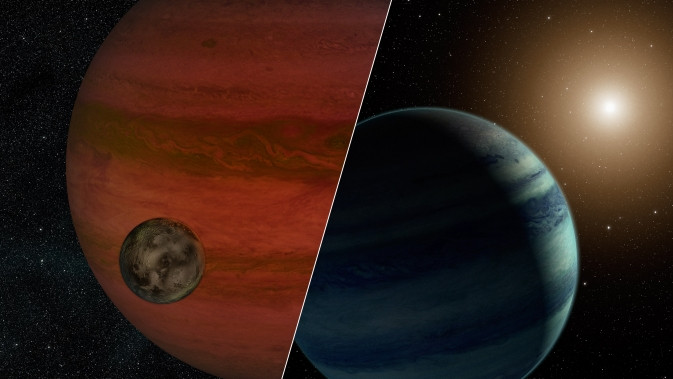Have Scientists Found First Exomoon by Chance?

Scientists believe they have accidentally discovered their first exomoon - a natural satellite outside the solar system.
The lunar candidate, which was spotted near a cosmic system dubbed MOA-2011-BLG-262, was seen by chance using a telescopes in New Zealand and Tasmania.
Using a technique known as gravitational microlensing, the researchers were able to take advantage of chance alignments between stars.
"When a foreground star passes between us and a more distant star, the closer star can act like a magnifying glass to focus and brighten the light of the more distant one. These brightening events usually last about a month," Nasa explained.
If a foreground star has a planet circling it, the planet acts as a lens to brighten the light. This means researchers are able to measure the mass of a planet in comparison to its orbiting companion – which in this case appears to be a moon.
Researchers will not have the opportunity to observe the potential exomoon again because of the method used to first spot it.
The study was led by the joint Japan-New Zealand-American Microlensing Observations in Astrophysics (MOA) and the Probing Lensing Anomalies NETwork (Planet) programmes.
Lead author David Bennett, of the University of Notre Dame, said: "We won't have a chance to observe the exomoon candidate again. But we can expect more unexpected finds like this."
In their study, the researchers said the ratio of the larger body to its smaller companion is 2,000 to one, meaning it could either be a small faint star circled by a planet, or a planet bigger than Jupiter coupled with a moon.
However, there is no way of working out which one of these scenarios is true: "One possibility is for the lensing system to be a planet and its moon, which if true, would be a spectacular discovery of a totally new type of system," said Wes Traub, the chief scientist for Nasa's Exoplanet Exploration Programme office at the Jet Propulsion Laboratory.
"The researchers' models point to the moon solution, but if you simply look at what scenario is more likely in nature, the star solution wins."
To work out if the first exomoon has been discovered, researchers will have to work out the distance of the circling objects. The true identity of the mystery object, will, for now, remain unknown.
© Copyright IBTimes 2025. All rights reserved.






















